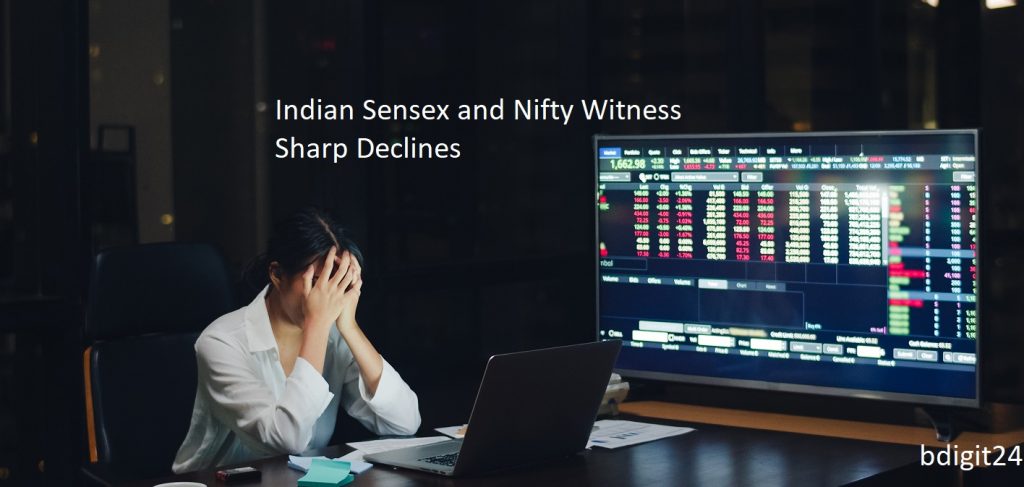How U.S. Tariffs and Global Uncertainties Are Reshaping Investor Sentiment in 2025
Overview of the Market Decline
On April 4, 2025, India’s benchmark indices, the BSE Sensex and NSE Nifty, witnessed significant losses amid escalating global trade tensions. The Sensex closed at 75,348, down 1.24% (947 points) from the previous session, while the Nifty settled at 22,893, plunging 1.54% (357 points). Broader markets mirrored this trend, with the BSE Midcap and Smallcap indices dropping 3.28% and 3.75%, respectively.
The downturn followed the U.S. administration’s imposition of a 27% reciprocal tariff on Indian imports, part of a broader strategy to enforce trade barriers on multiple nations. This move heightened fears of a prolonged trade war, triggering a sell-off across sectors.
Key Drivers of the Sell-Off
- U.S. Tariff Policy Shocks Markets
The abrupt announcement of a 27% tariff on Indian goods by the U.S. government caught investors off guard. Analysts at Macquarie noted the rate was “far worse than expected,” with potential effective tariffs settling at 20–25% post-negotiations. This compares to higher duties imposed on other Asian economies, such as 36% for Thailand and 32% for Indonesia. - Global Market Contagion
Asian markets, including Japan’s Nikkei (-3.9%) and South Korea’s Kospi (-2.9%), faced steep declines earlier in the week. Wall Street’s reaction was severe, with the S&P 500 sinking 4.8%—its worst single-day drop since the 2020 pandemic. - Sector-Specific Pressures
- Metals and Automobiles: Tata Steel and Tata Motors emerged as top losers on the Sensex, reflecting concerns over reduced export competitiveness.
- Pharmaceuticals: Dr. Reddy’s Laboratories hit a 52-week low, though analysts anticipate potential relief rallies as tariff uncertainties ease.
- IT Sector: TCS touched a 52-week low, signaling broader sectoral vulnerabilities.
Winners and Losers
Top Gainers:
- HDFC Bank and Bajaj Finance led gains in the Sensex, buoyed by defensive investor positioning.
- Axis Bank and ICICI Bank also saw upticks amid sector rotation.
Top Losers:
- Tata Steel and Hindalco (Nifty) fell sharply due to tariff-driven raw material cost fears.
- Adani Ports and Larsen & Toubro declined on infrastructure slowdown concerns.
Expert Insights
V K Vijayakumar, Chief Investment Strategist at Geojit Financial Services, highlighted the market’s “heightened uncertainty” due to the risk of retaliatory tariffs from China and the EU. He cautioned that the turbulence could persist until trade policies stabilize.
Global analysts emphasized the dual impact of safe-haven asset shifts (gold, bonds) and currency volatility, with the Indian rupee weakening against the dollar.
Broader Market Impact
- Retail Investors: Over 2,172 stocks declined on the NSE, compared to just 403 advances, underscoring widespread pessimism.
- Midcap and Smallcap Stocks: These segments faced disproportionate losses, reflecting risk aversion among institutional players.
Looking Ahead
While the tariff landscape remains fluid, investors are advised to monitor:
- U.S.-India Trade Negotiations: Potential revisions to tariff rates.
- Global Central Bank Policies: Responses to inflationary pressures from trade disruptions.
- Sectoral Opportunities: Pharma and banking stocks may rebound if macroeconomic headwinds ease.
References: Data sourced from India Infoline, Reuters, The Indian Express, and LGT market analyses.


